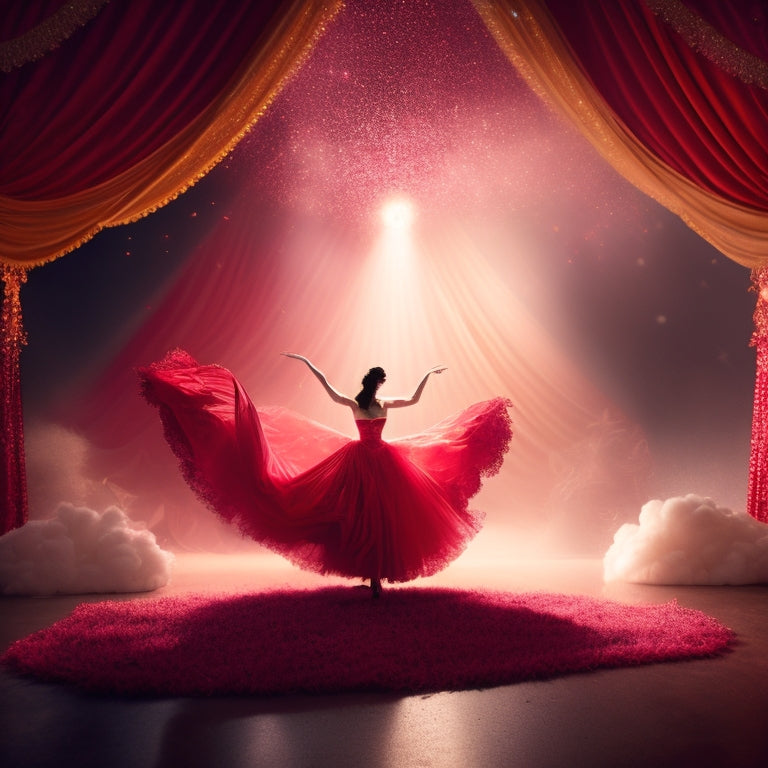
Unveiling the Enchanting World of Dance Performances
Share
Dance performances are a rich tapestry of diverse styles, techniques, and cultural influences, woven together to create a mesmerizing world of artistic expression. From the elegance of ballet to the dynamic fusion of world dance, each style has unique characteristics shaped by historical influences and cultural traditions. Choreographers weave intricate movements and expressive body language to convey emotional depth and narrative complexity. As cultural heritage meets contemporary expression, new styles emerge, celebrating diversity and redefining the possibilities of dance. As we venture deeper into this enchanting world, the boundaries of movement and artistic expression continue to evolve, revealing new wonders waiting to be discovered.
Key Takeaways
• Dance performances showcase diverse categories, including ballet, modern-contemporary, dance theatre, and world dance, each with unique characteristics.
• Choreographers weave intricate movements and expressive body language to convey emotional depth and narrative complexity.
• Historical influences and contemporary trends shape creative decisions, resulting in unique and evolving dance styles.
• Cultural fusion in dance combines traditional and contemporary styles, celebrating diversity and redefining the possibilities of dance.
• Costume design, lighting effects, and movement dynamics all enhance the aesthetic and emotional impact of dance performances.
Exploring Dance Categories
Dance performances encompass a diverse range of categories, each with its unique characteristics, technical requirements, and artistic expressions, including ballet, modern-contemporary dance, dance theatre, and world dance. Historical influences have shaped the evolution of movement in each category, with ballet's codified steps and modern-contemporary dance's breakaway from traditional ballet rules.
Costume design and lighting effects also play a significant role in enhancing the overall aesthetic and emotional impact of each performance. The fusion of cultural traditions in world dance and the incorporation of theatre elements in dance theatre further expand the possibilities of artistic expression.
As choreographers continue to push boundaries, the evolution of movement and artistic expression will without a doubt continue to unfold.
Styles and Techniques Unveiled
Through a rich tapestry of techniques, choreographers masterfully weave together intricate movements, nuanced gestures, and expressive body language to convey the emotional depth and narrative complexity that define each dance style.
In doing so, they draw upon a deep understanding of movement dynamics, harnessing the power of artistic expression to evoke emotions and tell stories. Historical influences, from the codified steps of ballet to the expressive freedom of modern-contemporary dance, inform their creative choices, while contemporary trends, such as the fusion of styles and incorporation of new mediums, continue to push the boundaries of what is possible.
As a result, each dance style emerges as a unique, living entity, pulsing with energy and emotion.
Cultural Fusion in Motion
As cultural boundaries continue to blur, choreographers are increasingly drawn to the creative potential of fusing disparate dance traditions, yielding innovative expressions that not only reflect our globalized world but also challenge and redefine the very essence of dance itself.
This fusion of movement traditions allows traditional meets contemporary, resulting in a unique blend of styles. By combining the richness of cultural heritage with the freedom of modern expression, choreographers can create something entirely new and mesmerizing.
The fusion of movement traditions enables dancers to push boundaries, experiment with new vocabularies, and craft a distinctive narrative that resonates with diverse audiences.
This cultural fusion in motion not only celebrates diversity but also forges a new path forward, redefining the possibilities of dance.
Frequently Asked Questions
What Is the Ideal Age to Start Taking Dance Lessons?
For instance, Emma, a 4-year-old, began taking ballet lessons, and her parental influence and early exposure sparked a lifelong passion. Ideally, starting dance lessons between ages 3-5, when motor skills and creativity are developing, sets the stage for a strong foundation and lifelong enjoyment.
How Do Professional Dancers Maintain Their Physical Fitness?
Professional dancers maintain physical fitness through cross-training regimens that prioritize injury prevention, incorporating strength and conditioning exercises, Pilates, yoga, and cardiovascular activities to promote overall wellness and optimize performance capabilities.
Can Dance Be an Effective Form of Stress Relief?
Dance can be an effective form of stress relief through mindfulness movement and emotional expression, allowing individuals to channel tension into physical release, fostering a sense of catharsis and relaxation.
Are There Dance Styles Specifically Designed for Seniors?
Yes, dance styles like Silver Swans, specifically designed for seniors, promote flexibility and balance, while Golden Grooves, a fusion of dance and exercise, improves cardiovascular health, catering to the unique needs of older adults.
Can Someone With No Experience Become a Professional Dancer?
With dedication and perseverance, it's possible for someone with no experience to become a professional dancer, leveraging natural talent and embracing a career change, as they start on a transformative journey to master their craft.
Related Posts
-

5 Online Resources for Dance Makeup Inspiration
You can find endless dance makeup inspiration online! Start by browsing YouTube tutorials, where you'll discover comm...
-

Dance Audition Essentials: Must-Haves for Success
You're about to take your dance audition to the next level by focusing on the essentials that'll give you an edge. St...
-

Innovative Therapy: Dance Movement's Healing Power
Dance movement therapy is a creative and evidence-based approach that harnesses the transformative power of movement ...


